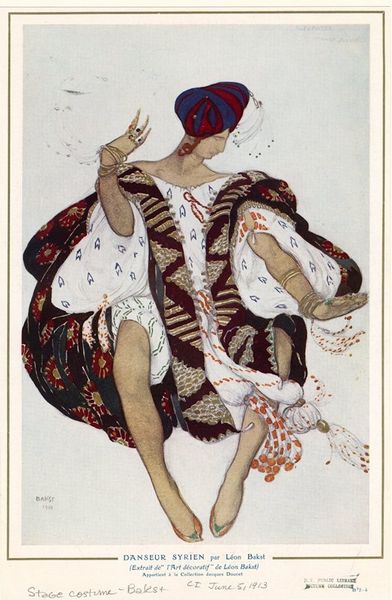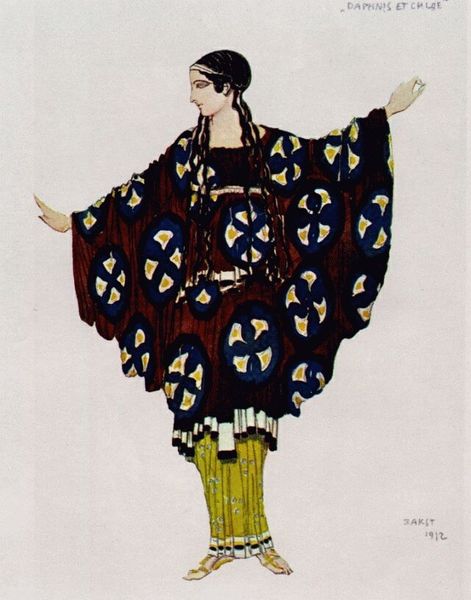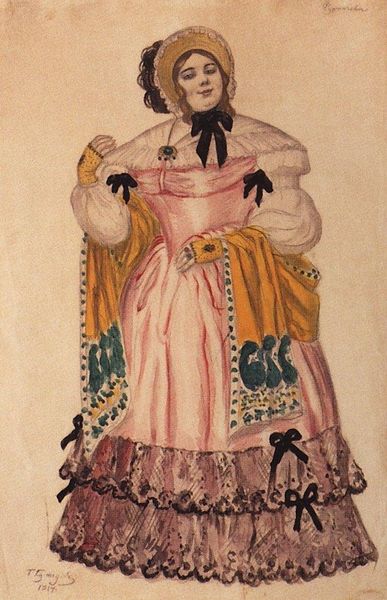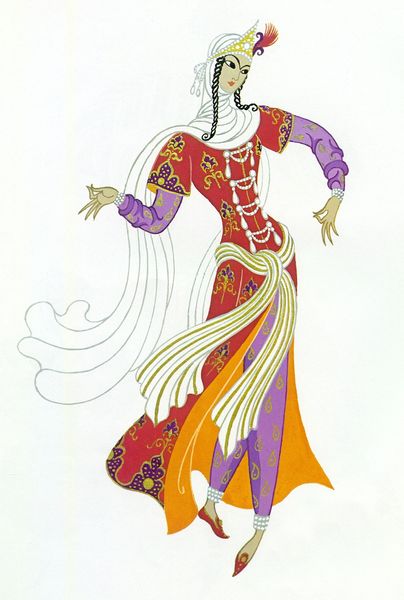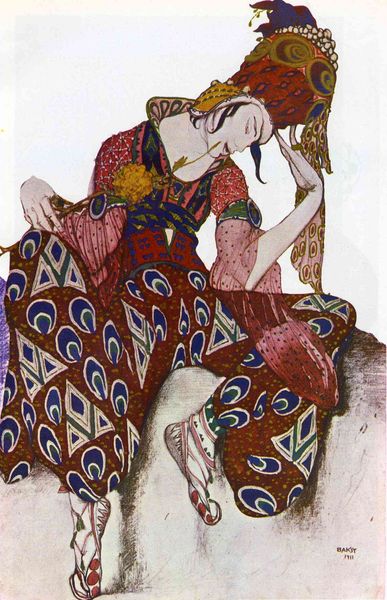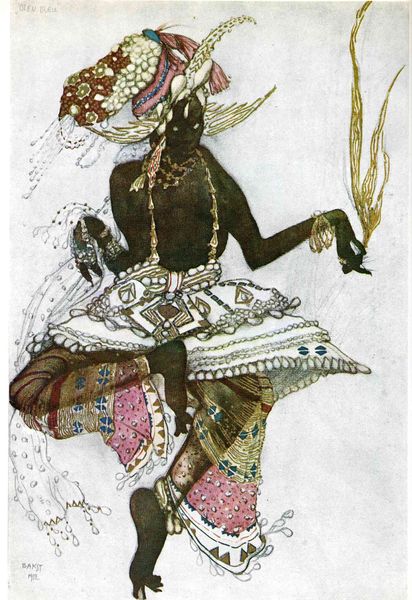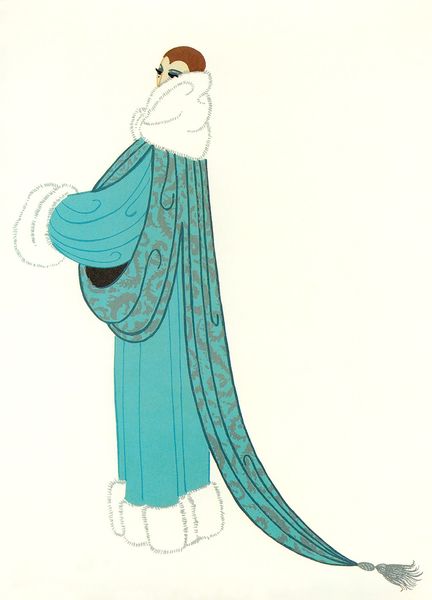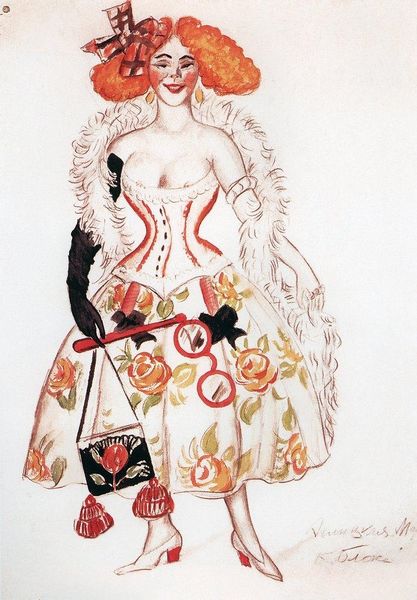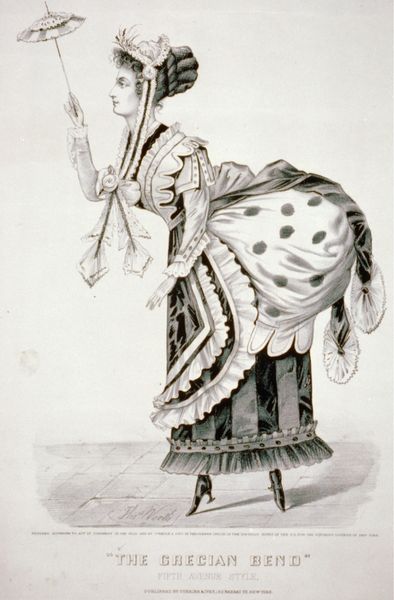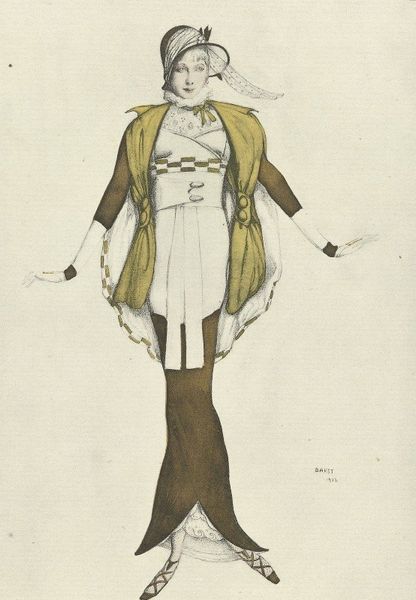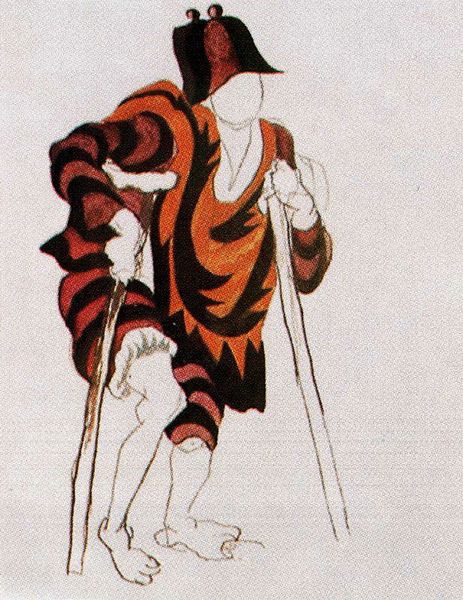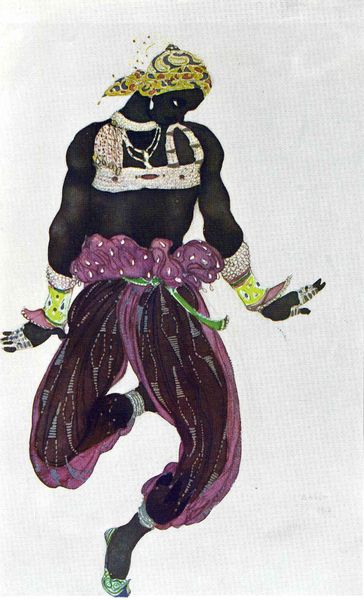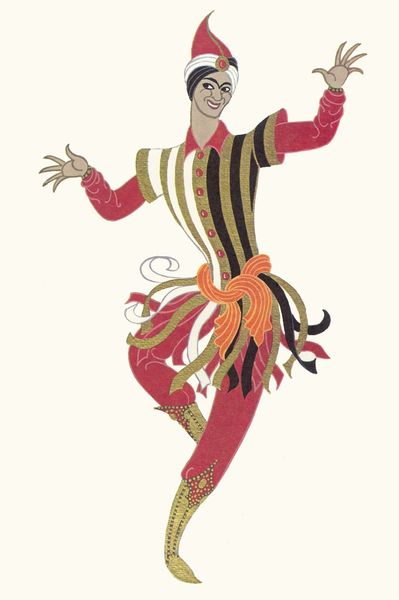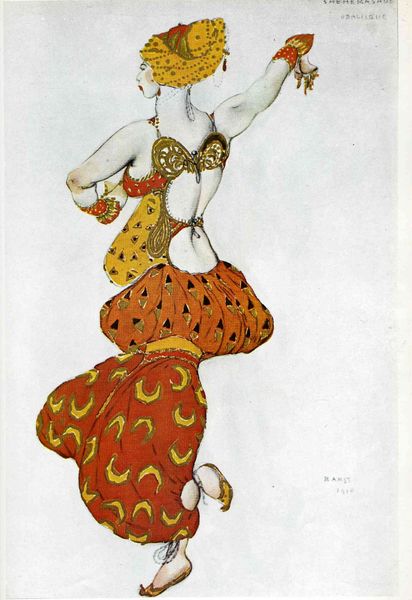
drawing, watercolor
#
portrait
#
drawing
#
caricature
#
watercolor
#
sketch
#
naive art
#
costume
#
symbolism
#
watercolour illustration
Copyright: Public domain
Editor: This watercolor and drawing titled "Cleopatre danse juive" by Léon Bakst, created around 1910, presents such a flamboyant character! The colours and costume feel theatrical. How might we interpret Bakst's intention behind this depiction through a historical lens? Curator: That's a great observation! The 'theatrical' feel is key. Bakst was a prominent stage and costume designer for the Ballets Russes. This piece likely represents a costume design for a production. Thinking about its historical context, consider the rise of Orientalism in early 20th-century Europe. How do you see that playing out here? Editor: The exoticized costume, definitely, but it also has 'Jewish dance' in the title. Is that part of the orientalist trend you mention? Curator: Exactly. Jewish culture was often romanticized or misunderstood in Western European imagination. The fusion of Cleopatra, an Egyptian queen, with Jewish dance taps into a potent, albeit potentially problematic, exoticism. Bakst presented a view of Jewish identity on stage, for predominantly non-Jewish audiences. What considerations come to your mind thinking about this performance context? Editor: I see. It was about creating an exciting, 'foreign' spectacle for a Western audience, regardless of historical accuracy or cultural sensitivity. What about Bakst's choices around medium here; watercolour, drawing, and costume. Is there anything to say about his working methods? Curator: Bakst’s choices reflect the collaborative and rapidly evolving nature of theatrical production. Sketches and watercolors allowed for quick visualization and communication of ideas among designers, composers, and dancers. They were instrumental in shaping the visual identity of the Ballets Russes, which heavily influenced trends in fashion and design across Europe. Editor: This really enriches my appreciation! The socio-political forces and performance context provide crucial context, thank you. Curator: And understanding these theatrical designs sheds light on the broader cultural trends and representations of the time. It was a good conversation!
Comments
No comments
Be the first to comment and join the conversation on the ultimate creative platform.
